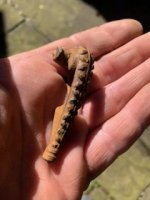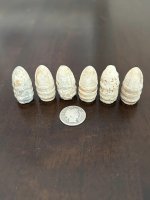Barbwiregirl
Greenie
- Jul 6, 2011
- 13
- 0
Any ideas what this coin is and maybe an estimated price? I also posted in 2 other sections but was told this was the best section to post in...
It has been tested to be 22k gold or better (by a jeweler) and has a separate bezel around it that is 14k gold. The weigh is 6.5 or 6.9 (I forgot exactly).
Thanks in advance for any info!!
It has been tested to be 22k gold or better (by a jeweler) and has a separate bezel around it that is 14k gold. The weigh is 6.5 or 6.9 (I forgot exactly).
Thanks in advance for any info!!


![IMG_2940[3].jpg](/data/attachments/527/527521-03e6629aaead6e43764164ba5357ef65.jpg)
![IMG_8121[3].jpg](/data/attachments/527/527569-eda3f683549f75160d94414f5a252f17.jpg)
![IMG_8450[3].jpg](/data/attachments/527/527571-eda3f683549f75160d94414f5a252f17.jpg)
![IMG_2940[3].jpg](/data/attachments/527/527539-03e6629aaead6e43764164ba5357ef65.jpg)
![IMG_8121[3].jpg](/data/attachments/527/527592-eda3f683549f75160d94414f5a252f17.jpg)
![IMG_8450[3].jpg](/data/attachments/527/527596-eda3f683549f75160d94414f5a252f17.jpg)









